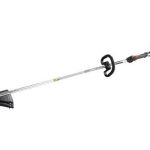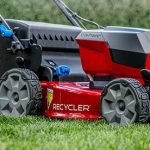In a previous article on Lawneq.com, we discussed Aquaponics gardening. We discovered that this type of gardening involves fish and plants. The waste matter produced by the fish is used to fertilize the plants.
Well, there are a number of filtration systems that can be used in an Aquaponics garden. They include:
- Swirl Filters
- Raft Filters
- Mechanical Filters
Why You Need A Filter
The premise behind an Aquaponics garden is that bacteria in the water convert the ammonia produced by the fish into nitrates. The plants need nitrates to ensure healthy growth. The bacteria help keep the fish healthy because they filter the water and remove toxins.
A filter is necessary because all the particles in the Aquaponics system are not dissolved. Larger particles of waste survive and could be pumped to the grow beds.
If you aren’t using a proper filter, then the grow beds are affected because the larger particles still remaining in the water can clog them causing aerobic zones where the bacteria can live. This reduces the surface area of the system.
In addition, solids can create sludge at the bottom of the trays that create gasses and aerobic zones for the bacteria. The solids can also lift the roots of the plants because of aeration and they will stick to the roots causing brown roots.
Moreover, particles can get caught in the roots and eventually block water flow.
Thus, the large particles that remain can block the flow of water, preventing the plants from receiving the nutrients they need. They also deprive the fish of clean water.
So obviously, some kind of filtration system is necessary.
Swirl Filters (Vortex)

This system is shaped like a small barrel that contains a basket. You add your choice of filtering material to the base of the basket.
Once the filter is installed in the Aquaponics garden, water from the fish tank flows through. A swirl is created that slows the rising water. The water then empties out of the tank through a pipe at the top of the barrel and goes into the plant bed.
The swirl filter is successful in cleaning the water because of the swirl. The high level of flow allows the larger particles to sink to the bottom of the basket and stay there. So hard particles can’t block the system.
Raft Filters

The filter looks like a small raft floating in the tank. It has three chambers. Water from the fish tank flows through the top of the first chamber. The chamber includes three large foam pieces that serve as the filter. They capture the larger waste as well as dirt particles before the water flows onto the next chamber. Most of the wastewater drops to the bottom of the tank. The water overflows each chamber to get into the next.
It is suggested that you use two foam pieces to create each wall. This will allow you to remove just one wall to clean a chamber without affecting the next one.
Once the water flows through all three chambers, it is clean enough to be pumped into the plant tank.
It is important that the water overflow each chamber so that it evacuates from the top. This ensures that the particles that settle on the bottom are not dragged through and forced into the plant tank.
The raft filter should be used in a fairly large tank. You will periodically need to shut the water to the large tank off to remove the sludge that builds up at the bottom of the tank.
Mechanical Filters
You can also purchase a pump that is designed to filter water to remove certain materials. However, pumps are expensive and may not produce better results than the swirl or raft filters.
You can improve the performance of the pump. Take a pair of tights and cut it into several sections. Secure a section over the inlet and outlet pipes of the pump. The tights serve as an extra filter and prevent large particles from getting into the pipe.
You will need to replace the tights periodically to ensure that it can’t become a source of any clogging.
Parting Shot
As you use an Aquaponics system to grow plants, keep in mind that solid waste particles are heavier than water and will settle. This makes it easier to remove them. Thus protecting the system.
It is important to reduce the amount of particles that could be introduced into the system. For example, don’t overfeed the fish so that extra food does not clog the system. Don’t use cheap fish food. It could increase the amount of waste. Don’t use too many fish in your Aquaponics system. Calculate the number of fish you can use based on the size of the fish when they are adults. Too many fish can produce too much waste.
Periodically check the roots of the plants to determine the quality of the fish food and filters. If they are slimy and gray or brown, then there could be too much debris in the tank. Change the fish food and reduce the amount you use. This could eliminate the need to add a filtration system.
(Source: howtoaquaponic.com)






